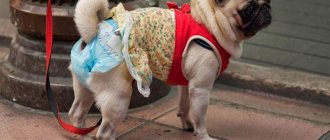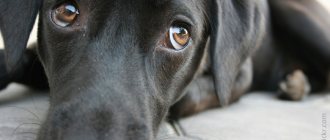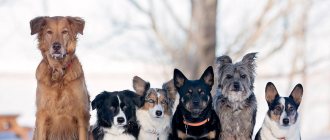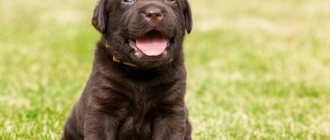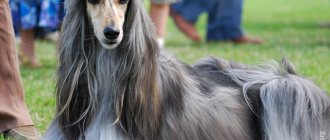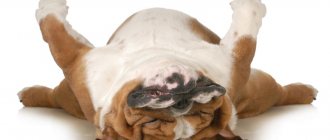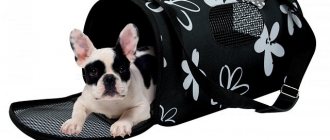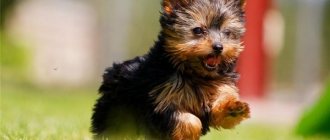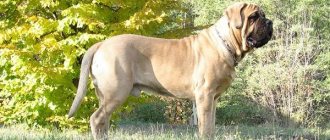Working with dogs in Russia, I constantly come across myths about harnesses. Misunderstandings, unsolicited comments, and surprise are frequent companions in my classes. I would like to tell you why I choose this equipment for my own and client’s dogs.
First of all, the equipment should be comfortable. Why is it important? Contact with the owner is best when there is no tension and fear in the relationship due to the expectation of pain and punishment. There are no unpleasant or painful sensations from what is put on the animal. After all, dogs always understand what is the source of their suffering, and every dog, to a greater or lesser extent, shows signals of fear and discomfort whenever a person picks up corrective equipment. Dogs build cause-and-effect relationships, draw conclusions and try to avoid unpleasant things. But this is not always the case as the owner expects. A fairly large number of people who contacted me reported that they wanted to teach their pet to stop running away, picking up, etc., but the animal only learned to keep an even greater distance from its owners and better hide what it had done. Our four-legged charges are very smart. I offer only what will help make friends with them, and not vice versa.
How to fit a harness correctly
Take a look at the dog's skeleton. It is clearly seen that the safest place to carry ammunition is the chest. All internal organs and large blood vessels are hidden under a strong bone corset, and the thoracic spine is the least mobile. Trauma is minimized here.
The main thing in a harness is comfort for the dog. This means that it must be made of soft material that will not stick out, dig in at the edges, cause pain, or interfere with movement. The only relatively hard place in such a harness is the strap on the back, which must be tightly stitched. All other straps should be soft and pliable and take any shape. Try squeezing them in your hand - this should be easy, without resistance. For the most physiological fit, it is necessary that the harness be adjusted in three places:
1 - on the shoulders; 2 - on the chest; 3 - on the sides.
From above, such a harness looks like the letter H:
2-3 fingers should fit freely under the straps. The shoulder straps are positioned exactly along the shoulder slope. The side straps do not interfere with the movement of the front paws.
The shoulder straps lie exactly over the shoulders. Not higher (not on the neck!) and not lower: falling loosely on the shoulders, the straps interfere with movement and increase the likelihood of injury.
From the front, the harness looks like a Y, with the straps meeting at or just below the sternum. It is important that when tensioning the harness straps do not slide down your neck.
The distance of the side strap from the dog's elbow should be approximately one palm wide. The allowed distance is less for decorative dog breeds and more for large ones.
The side straps should not extend beyond the chest and be placed on the dog’s stomach, and when sitting closer in small breeds, one should focus on the movement of the front legs. When moving the paw back, the side strap should not rest against the elbow or be under it (in the armpit).
When sitting, the side straps should not touch the dog's elbows or rest against the dog's armpits.
The most common mistakes when fitting:
- insufficient or no indentation from the elbow;
- the fit is too tight across the shoulders, so that the shoulder straps are located not on the shoulders, but at the base of the neck;
- the fit is too tight on the sides, so that the dog has difficulty breathing;
- A too loose fit, where the shoulder straps fall over the shoulders and can lie perpendicular, the side straps fidget around the body, and the chest strap hangs between the legs.
How not to make a mistake in choosing
I have been working with dogs since 2000, and in all this time I have never resorted to correction through causing pain and discomfort. At the very beginning of my practice, I did not yet have fully formed requirements for equipment: although I did not use corrective equipment, I worked with dogs in wide soft woven collars and with dogs in all types of walking harnesses. I looked closely at the landing, at the sensations and signals of the animals. A year later, I already recommended only H-shaped harnesses as the safest and most physiological. What is their difference?
rice. 1: H-shaped harness, adjustable at shoulders, sides and chest. It has two durable rounded plastic fastex, which makes it easier to put on the harness.
rice. 2: H-shaped harness, also adjustable in three places. There is only one Fastex, when putting it on you will have to lift the dog’s front paw (for sensitive and timid dogs this may be unacceptable). The material is quite coarse thin nylon, which may be unpleasant for hairless and smooth-haired dogs.
rice. 3: Incorrect H-shaped harness. This type of harness cannot be adjusted across the chest, so it is impossible to make enough space from the elbow. The fastex is located at the bottom, which means it will interfere with the movement of the front paws, cutting into the armpit/elbow. I do not recommend purchasing such a harness.
Rice. 4: Harness made of less pliable material, which cannot be adjusted across the shoulders and chest; may wrap around the neck (located above the sternum); it is impossible to make a sufficient distance from the elbow.
Rice. 5: Rigidity does not allow a comfortable fit to the dog; the same disadvantages: it can rest on the neck and armpits. May be suitable for some deep-chested breeds, but there is still the problem of insufficient elbow clearance.
Rice. 6: This type of harness cannot be adjusted correctly; metal fastex (metal fittings are often not the most pleasant for a dog, especially in the cold), located at the bottom; it is impossible to make a retreat from the elbow; The leash carabiner attachment point is located in the center of the back strap, which increases pressure on the neck. Given the very poor cut, the placement of the leash ring makes this harness look more like a collar.
Rice. 7: Leather or leatherette are not the best materials for a harness: they can deform when wet, have more weight, and the buckle does not allow you to accurately adjust the length of the straps. This harness is not adjustable across the shoulders, increasing the risk of injury.
Rice. 8: A rough, heavy harness that will most likely hinder the dog’s movement; impossible to fit accurately enough.
Rice. 9: Harness without chest strap, allows the shoulder strap to slip onto the neck; impossible to fit correctly; Rhinestone jewelry can be accidentally swallowed by a dog playing partner and cause choking.
Rice. 10: The harness is irregularly shaped, located above the sternum (on the neck), perpendicular to the shoulder; it is impossible to make an indentation from the elbow, because There is no strap on the back - the harness is assembled at one point.
Rice. 11: Hard straps do not fit well on the dog’s body; not adjustable across the chest; no strap on the back.
Rice. 12: Incorrect harness shape; not adjustable across the chest; on the back the straps converge at one point.
Rice. 13: Incorrect form, so-called. "Norwegian harness"; The shoulder belt is positioned perpendicular to the shoulders and can injure the shoulders and neck; it is impossible to make a retreat from the elbow; The dog can easily wriggle out of such a harness.
Rice. 14: An even rougher version of the Norwegian harness; Fastex from below interferes with the movement of the front paws.
Rice. 15: Leather version of the Norwegian harness; wide, heavy, does not follow the contours of the dog’s body; impossible to fine-tune; interferes with the movement of the front paws; The shoulder strap rests at the base of the neck, perpendicular to the shoulders.
Rice. 16: Incorrect shape, does not follow the contours of the dog’s body; no chest strap; the shoulder belt lies on the neck and suffocates when pulled, it is positioned perpendicular to the shoulders, increasing the risk of injury; a large fastex is located below the elbow, there is no way to make a sufficient indentation.
Rice. 17: Variation of the previous harness with the difference in the presence of a chest strap; uncomfortable, impossible to fit correctly.
Rice. 18: Corrective harness; uncomfortable, painful, can injure the dog; the carabiner is fastened in front; when the leash is pulled, the harness straps squeeze the sides and dig into the armpits; It’s easy to get out of this harness by backing away.
Safety to use
I recommend an H-harness because I am responsible for the health of the dogs I work with. They should under no circumstances be exposed to the risk of physical harm or psychological harm. The leash in your hands is your connection with the dog; The leash helps the owner feel his dog and convey necessary messages to him. And these messages should not be negative. Ammunition is needed for backup, but not for rough influence in training. A harness will help preserve the health of the animal and avoid behavior problems.
“In 1992, Anders Hallgren published the results of an examination of the musculoskeletal system of 400 dogs that were considered healthy. According to an article by Dr. Ginny Thomason and Dr. Erin O'Connor (American Board of Animal Naturopathy), 63% of dogs were found to have some form of abnormality. Of those animals whose owners reported aggression or hyperactivity, 78% had neck and back injuries. 91% of dogs with neck injuries have experienced leash tugging or pulling on their own at some time.” [1],[2]
Sometimes even the owner of the dog does not know some of the features of its health. Moreover, an instructor who is visited once a week. There are several contraindications for using the collar, in particular ophthalmological problems. In order not to cause harm out of ignorance, it is better to choose safe ammunition:
“A 2006 study at the University of Wisconsin-Madison involved 26 dogs that pulled on a leash while wearing a collar or harness. Intraocular pressure was measured, which did not increase relative to normal when using a harness, but “the pressure increased significantly when the leash was pulled in the collar...”. Dr. Pauli, Dr. Bentley, Dr. Deal, and Dr. Miller recommended "wearing a harness instead of a collar in dogs with weak or thin corneas, glaucoma, or conditions in which increased intraocular pressure may be harmful." [3]
“Peter Dobias, DVM, wrote on his blog about the many negative consequences of wearing a collar. Damage to the thyroid gland due to tugging and squeezing (whether the dog is pulling on the leash on its own or being pulled by a person) is a fairly common problem. If the thyroid gland becomes inflamed, the animal's immune system seeks to get rid of the affected cells, which in turn leads to hypothyroidism. Because thyroid function affects the metabolism of the entire body, the consequences can be quite serious.” [4],[5]
“Our previous dog wore a choke and had hypothyroidism and later glaucoma. I was completely unaware then. Our little Ruby was also recommended a stranglehold by a breeder and a trainer at a dog school. What a blessing that I came across an article about the harmful effects of corrective equipment, and I immediately changed Ruby into a harness,” Anna Brown
“My boxer is 11 years old. Last spring, the fur on his side began to fall out a lot. At the clinic, they took hormone tests and found problems with the thyroid gland - hypothyroidism. He was prescribed treatment. In addition, for the last year he has been wearing a collar almost constantly. After Veronica's seminar* I took off his collar. A month and a half after he started taking medication and walking in a harness, fur grew on his side again. The problem never happened again."
, —Irina and Mag
(*Veronica Kulikova is a TTouch practitioner. TTouch is a concept of positive, mostly tactile interaction with animals to build trusting relationships, improve their behavior and health, and provide assistance in difficult situations.)
“The thymus (thymus gland) is an important organ that is responsible for the development of the immune system’s T cells (T lymphocytes), which play a crucial role in the fight against “foreign invaders” in the body. The thymus is divided into cervical and thoracic parts. In newborn puppies, the thymus is functionally fully formed, and by 3 months of life it reaches its maximum size. It is most active until 4 - 6 months, and then the involution of the thymus begins - the replacement of the organ with adipose tissue. [6] Young puppies are more likely to pull on a leash, and thymus function and the immune system can be affected as a result. This is the time when you either gain or lose precious years of your dog's life." [4]
“Tightening the leash restricts the flow of blood and lymph to and from the head, which can cause vision and hearing problems. "Pressing the nerves leading to the dog's front paws can lead to sensory loss and undesirable behavior such as constant paw licking." [4],[5]
“In 2007, Anita Miles published a paper entitled “Dog Pathologies Associated with the Use of Choke*” and summarized the results: “As a result of research, I came to the conclusion that damage to the cervical and thoracic organs is associated with the use of choke. I also find it clear that deviant and overexcitable behavior is linked to the use of garrotes." [7]
(*This implies the use of any tightening collars: parfors (strict collar), choke, martingale (half-choke), jerk chain, - approx.)
Daniel Antolec, a police officer, dog handler and behaviorist, writes on his blog: “It is very sad that many trainers still use outdated methods and traumatic equipment and do not inform dog owners about the possible risks, despite clear evidence of the harmful effects of garrotes and squeezers. . Fortunately, there are experts whose opinions are based on scientific research. For example, a group of specialists working with pets (trainers, breeders, veterinarians, etc.) Pet Professional Guild. Their stance on the use of garters and garrotes offers hope for safer interactions with dogs in the future.” [5]
“The Pet Professional Guild (PPG) position is based on the belief that effective dog training underpins healthy socialization and training and helps prevent behavioral problems. Various organizations and associations should provide educational courses to pet owners so that they can provide their pets with a good upbringing and a stable environment, thereby better preventing potential behavioral problems and ensuring the overall well-being of the animal.
Along with creating favorable conditions, it is necessary to avoid the use of ammunition that suffocates, squeezes, causes pain and digs into the neck (for example, parforces, jerk chains, garrotes, martingales, etc.).
Although the current record of injuries resulting from the use of parforces and snatch chains is incomplete, experience shows that soft tissue injuries are very common. As with any harsh training method, this has a negative impact on the relationship between man and dog.
Research and the experience of PPG members have shown that behavior problems can be consistently and effectively addressed through alternative methods that help improve the human-canine bond without resorting to the use of parforces, snatch chains, garrotes or martingales. Evidence indicates that harsh methods, rather than speeding up the learning process, actually slow it down, add stress to the animal, and can lead to both short-term and long-term psychological trauma.
Common Problems That Can Result from the Use of Prong Collars and Restraints
Physical injuries
Although experts are still gathering accurate information about the injuries that can occur due to the use of parforces, snatch chains and garrotes, there are many cases of soft tissue damage, ophthalmic problems, strangulation (resulting in death), tracheal and esophageal damage and neurological disorders in dogs. with whom we worked in similar ammunition.
Learning failures
Parforces and jerk chains are designed to use negative reinforcement and positive punishment. Methods based on these two quadrants of learning theory have their own side effects. For example, a dog barks threateningly and lunges at other dogs. If she is wearing a parforce, snatch chain or choke, the moment the unwanted behavior occurs, the dog will receive a painful tug or be strangled. Pain and suffocation will add to and reinforce the negative association towards other dogs. And this result is the complete opposite of what a competent training scheme should lead to.
Even if the dog does not exhibit reactive behavior, using parforces or jerk chains is not the best choice. For many skills, such as concentrated movement alongside or calm walking on a slack leash, parforces, jerk chains, chokeholds or martingales are traditionally used. Today, there are many effective alternative methods of training and managing skills for which corrective equipment is no longer a necessity.” [8]
Many of the dogs I have handled and worked with have suffered from neck and back pain, trachea damage, and even a broken hyoid bone. A sharp jerk on the noose can lead to irreversible consequences. It is not necessary for the owner to jerk: the dog can pull the leash itself or get injured in a game with a four-legged friend, getting caught in a noose while running. Puppies very often pull due to their age and curiosity. Old people may not hear the words of the owner. And an adult dog still remains a dog: it can joyfully reach out to a friend or family member whom it accidentally meets on a walk; suddenly enter the elevator because there is a baby standing there with a fragrant candy; forgetting to step onto the roadway; reaching for something unwanted on the street; meet nose to nose with an unfriendly watchdog when leaving the entrance; just jump over the lawn fence and do it unexpectedly abruptly... Throughout the dog’s life, situations arise when she herself or we humans pull the leash. It is much safer for your pet to be in a harness in such situations.
Myths
There are a lot of myths about the dangers of harnesses. At least in Russia, although in recent years more and more dogs are appearing in harnesses. I want to touch on the most common ones that I have ever heard.
“A dog in a harness will pull very hard.”
I want to reassure you right away: it won’t happen. Dogs pull from excitement and stress, and any collars only make it worse. Suffocation and pain do not contribute to relaxation and comprehension of what is happening, but only cause a desire to leave or even run away from unpleasant sensations. Many dogs pull even in a planer, and they pull harder precisely because the planer is on them.
I always start to deal with this problem by changing into a harness. And the results are often visible from the very first lesson: the dog relaxes and feels more confident. She stops pulling not because she was hurt or uncomfortable somewhere, but, on the contrary, because they stopped.
“I’ll tell you a story about convenience. My brother took a one and a half year old dog from an Indian street. And she didn’t want to go home with them; she had to carry her in her arms. On my advice, they bought a harness - and, lo and behold, the dog began to calmly come home! She definitely appreciated the ammunition,” Sergei Bezeka
“Out of ignorance, we began to wear a collar. We enrolled our dog (6 months old) in school, where the trainer also recommended a collar. Fortunately, this did not last long, I found materials about the dangers of a collar, and we switched to a harness. In the new gear, Ruby began to lift her head and look up - at the crows on the top of the tree, at the geese flying high in the sky, at the helicopters, at the planes. How joyful it was to see this! She's never done this with a collar on. Ruby followed the trajectory of the squirrels and realized that they did not magically disappear, but climb high into the crown of the tree. Since then, she has practically stopped chasing them, deciding that this is an empty and useless activity. Recently she saw sneakers thrown over electrical wires and refused to go under them - she pulled to the other side. Well, she was right: there’s something suspicious hanging on the wires at the top, what if it falls on your head?” - Anna and Ruby
“My puppy walked with a collar from the very beginning. While walking, he was constantly in a hurry, running forward, and the collar was choking him. As soon as we changed into a harness, from the first day the dog began to behave calmer and more obedient during walks, and became more relaxed. It was clear that he was comfortable and enjoyed walking in it. And even when he runs forward, the harness does not choke him,” Irina and Danube
“We walked in a collar for up to a year, but switched to a harness by accident - the dog got sick and started coughing. In order not to further injure the throat, I bought a harness for this time. And Lil liked it better in the harness, she became calmer! Before there were problems, I often pulled and was restless. After recovery, the collar was no longer used,” -Maria and Lilu
“My youngest male dog at that time wore a collar for up to a year. He had two ways of moving: pulling or pulling. If he didn't pull, he pulled. And vice versa. He weighed 30-35 kg, so it was very difficult to walk with him. At that time, I had a three-legged dog walking around in a harness, and it dawned on me: what if I put a harness on Lenka? I will never forget that first time wearing a harness! Lenya GO! First time in life! I walked, listening to myself, to my body...
At the shelter, I don’t explain anything for a long time to people whose dog “pulls”, I just say “look” and put on the harness. Undoubtedly, when a dog panics, it will still pull, even in a harness, but that’s a completely different story...” - Albina Sokolova
My colleague, zoopsychologist Yulia Rozova, received this letter:
“Marshanya has been walking on an anatomical harness for three weeks now, and this is three hundred million times better than on a planer. Well, we follow your recommendations to the best of our ability; today he took food from me for the first time on a walk! Several times in different places. From time to time he catches the toy on walks, and he no longer pees either at home or in the entrance. I’m very proud of him!”
You can continue ad infinitum. However, there is no secret to this. The dogs just become calmer.
“The dog will begin to twist his elbows”
Only if something bothers her. For example, large fastex directly in the armpits or thick leather belts in the same place. And exactly until such a harness is removed. If an H-shaped soft harness is put on the dog and it is adjusted correctly, making a sufficient indentation, then it does not even touch the elbows.
Most often, such concerns are expressed by breeders in Russia. In Sweden and Austria, for example, the vast majority of dogs I met were wearing harnesses—almost all of them. And there, even purebreds, even show dogs, and even puppies wear harnesses without fear from the people around them. To my friends from Finland, the breeders of their dogs even recommended wearing a harness - so as not to cause harm, and in no way did this affect the exhibition success of the four-legged dogs - both took first places.
How many hours a day does a city dog wear a harness? How many of them are on a leash? How long does it take? For comparison, sled dogs spend almost their entire lives in harnesses, in which they pull a team. Are there many northern dog breeds with twisted elbows? But their harnesses have a very similar shape - they fit on the shoulders in the same way, and there is also an indentation for the side straps.
What about amateurs and professionals of canicross, skijoring and bikejoring? These are not only huskies with malamutes, these are also all kinds of greyhounds, hounds, pointers, shepherd dogs, Dobermans, pit bulls, mestizos... And they all spend much more time in a harness, also pulling on the leash, than the average pet.
My dogs have been wearing harnesses since they were born to me - the first from 5.5 months, the second from 1.5 months. My clients' dogs, regardless of age and breed, wear harnesses. From mongrels to purebred champions. Simply because it is convenient and safe. And for the elbows too.
“In order to somehow significantly change the position and structure of the bones, orthopedic measures, hard plaster casting, bandaging, Elizarov-type devices, etc. are necessary. In this case, the dog must stay in them 24 hours a day, for several months, with constant tightening of the system. (Well, you can also “get your dog sick” with rickets; a lot of things will change there, too).
The thoracic spine in dogs is strong and stable, unlike the cervical spine, for example. Most discopathy, vertebral displacements, and collared dogs develop in puppyhood. Therefore, it is recommended to wear puppies in harnesses that are correctly selected according to size and anatomy.
At the same time, no harnesses have a direct impact on the belt of the forelimbs. And the problem of inverted elbows, regardless of breed, is purely genetic. Yes, breeders like to shove the shoals of their breeding into harnesses, harnesses with toys, etc.... But this is nothing more than working for a fool. About the fact that puppies learn to pull on harnesses, raking with their paws: if the owner is a fool, the dog will pull, raking, both on the harness, and on the collar, and even on the planer. The problem is that the risk of injury is much lower when wearing a harness. And you know all about tracheal injuries in collar exercisers. Teach your dogs not to pull, and neither the collar nor, especially, the harness will harm you.
They have not yet invented a walking harness that would work on the principle of orthopedic systems, allowing you to change the anatomy of a dog in a few hours of walking. But it would be nice, for example, for narrow-chested dogs with a narrow front set: here’s a fairy tale, I put on a harness - and the elbows turned out and the chest spread out to the sides! However, no... Unfortunately, the harness is just ammunition. And with the right shape and size, it will only help prevent damage to the neck of an ill-mannered dog, but will not be able to change it,” Alexandra Telitsyna.
I follow research into the effects of ammunition on a dog's health. I have not yet seen any work on the dangers of an H-shaped harness. Remember what the skeleton of a dog looks like - it immediately becomes clear why.
“The puppy will grow crooked”
I hear this quite often, without explanation from those warning me about the mechanisms and reasons for this process. Well, I hasten to reassure you, none of my or my client’s puppies grew up crooked. I think this warning can be considered a sub-point of the previous one with the same explanations. If the puppy does not grow crooked, pulling on the leash in the collar and sometimes even hanging on it, raking with its paws and panting, then in a harness it will not harm itself, even less so. It is unlikely that a puppy's shoulders, thoracic spine, ribs and sternum are weaker, more tender and more pliable than its neck.
“Harness is harmful to health” Harness is different from harness, although, of course, any harness is still safer than a collar.
In any case, instead of lumping everyone with the same brush, I suggest paying attention to the diversity of these same harnesses. I have already discussed their differences and disadvantages in this article. Yes, many can be inconvenient and even harmful. It is very important that the harness fits comfortably on the dog, that the front paws are free, and that the shoulder straps lie parallel to the shoulders. A perpendicular position, such as with a Norwegian harness, can actually cause harm. But this is not a reason to avoid harnesses altogether. This is a reason to think about it and choose the right one, that’s all. Norwegian harness
“The harness is contraindicated for short-legged dogs. It provokes paresis of the hind limbs"
This is also a very common myth. Well, a lot of dachshunds, corgis or French bulldogs (not so short-legged, but often have serious problems with the spine due to the wedge-shaped vertebra) are walked with collars. And, despite the supposed “safety” of such ammunition, spinal diseases are still very common in these breeds. The causes of paraplegia do not include wearing a harness, because... The harness does not affect the dog's spine. Even short-legged. If a dog in a properly fitted H-shaped harness pulls on the leash, the greatest pressure from the harness will be on the dog's chest - the shoulders and chest bone between the front legs. That is, in essence, you are holding the dog under the chest, but not by the back. Dachshunds and corgis are not uncommon among my clients. They have been walking in harnesses for many years, and not one of them has been harmed.
Of course, it’s nice that people care about the dog’s appearance, about its elbows and back. But the neck, which is an equally important part of the body, for some reason is never taken into account. Paraplegia (atrophy of two hind legs or two front legs) is not associated with wearing an H-harness. But among the causes of tetraplegia (atrophy of all four limbs) injury to the cervical spine is indicated. [9] Isn't this something to think about?
“The harness spoils the wool”
I would say that the lack of care for the wool damages it much more. I can’t cite any research on this topic, but even long-haired dogs - fluffy Chinese Crested and soft round Spitz, capricious-haired Yorkshire, Irish Setters, Golden Retrievers or fluffy Sheltie and Collie, wear harnesses without compromising their luxurious fur coat.
“The harness is conveniently adjustable (the size is highly adjustable both in the neck area and in the chest area, the dog wears it from a 10-kilogram weight, grew to 21 kg, and the harness is still just right, I didn’t even have to change it), it locks safely (and even without blocking, it has never opened accidentally), the fastenings do not break, it lasts a long time, the color is bright and practically does not fade (we have been wearing it for 2 years, it is still rich pink). No frayed fur was also observed (long-haired collie). This is our second harness from this company, I’m in love with their quality and colors, if it breaks, I’ll definitely buy it again,” Anna, a collie owner, in a review of an H-shaped harness.
Given the choice between a dog's health and a little more effort in grooming, I would not hesitate to choose health.
I would like to share my own experience. This is my first dog, Noyusha:
She is 13 years old in this photo. She had never known the harsh effects of a collar. Noyusha grew up wearing a harness and grew up straight and with straight elbows. Her neck and back were healthy, the vessels were never pinched or injured, and therefore blood circulation in the brain remained good until the very last day (she died at 15 years old). She did not suffer from dementia, and until the end she had a clear, meaningful look. At the age of 7, Noyusha suffered a stroke. She walked very poorly, constantly fell, and her face was distorted by paralysis. Two years later, Noyusha was again a strong, cheerful and energetic dog without signs of a terrible illness. She had no fears or behavioral problems. Noyusha always remained calm and reasonable. And she enjoyed life.
If you have even the slightest doubt about a harness, just take a look at this 13 year old dog:
PS I received a very encouraging review: “After reading your article “Stumbling block. Harnesses” decided to buy a Haqihana harness for the dog. Oh, miracle! The dog became so calm and relaxed. Now, even with other dogs, and even those who are not always friendly, Rudy finds contact. She stopped being nervous and hesitant in front of large crowds of people. Now walking with the dog has become even more enjoyable. I could never have imagined that changing equipment would so qualitatively improve the level of our walks. Now I have a well-mannered, friendly and happy dog. Thank you very much! »
Thanks for reading and sharing!
General requirements for harnesses
The first harnesses appeared in connection with the need to transport goods using dogs. In the classical sense, these are 2 belts that have connections along the spine along the back and in front between the dog’s paws. Thanks to this design, there is an optimal distribution of weight between the chest and forelimbs of the pet. Due to the complete absence of pressure in the neck area, maximum comfort and a feeling of freedom are provided for the dog. The belts are secured in such a way that the owner’s palm fits between the back and the harness, but it should not dangle too much.
If the fastening is weak, it will be uncomfortable for the pet to walk, and he will also be able to wriggle out of it.
There are several main types of harnesses depending on the purposes for which they are used. These include:
- walking;
- sledding;
- medical;
- guards;
- sports;
- search engines
Experienced breeders and dog handlers recommend purchasing several varieties that will be used for different purposes. For example, when traveling, walking and when training, you will need different variations of the accessory. Before purchasing, you should try it on your pet.
It is important to know that it is strictly contraindicated for puppies to wear a harness.
For dwarf breeds, the recommended start of wearing the accessory is upon reaching six months, for others – from 10-11 months of age. The danger is that when walking in dog gear, deformation of the forelimbs with elbows turning out may occur. This occurs when the harness strap passes through the puppy's armpits. Changes in the joints of the paws form very quickly - in about 3 weeks of constant wear.
When choosing a harness for your pet, it is important to prepare in advance: consult with a veterinarian, dog trainer, breeder, and study the articles available on this topic. There are special tables that help in calculating the size and selecting the right accessory. To do this, measure the animal and take a number of measurements:
- Back length – the distance from the collar to the beginning of the pet’s tail.
- Chest circumference - measured at the widest possible point along the ribs. Add 2 cm to the results obtained, and 1 cm for sofa dogs.
- The circumference of the neck is where the collar is worn.
Modern pet stores provide a wide selection of harnesses made from various materials: nylon, leather, canvas, velor, various fabrics, etc.
Useful video
Watch this video on how to properly measure your dog when choosing a harness:
Similar articles
- Transporting a dog in a car: travel rules...
A properly organized dog ride in a car brings joy to both the animal and the owner. A hammock, a cover, a cape are constant travel companions. Read more - How to train a dog to wear a leash, walk with a collar...
Figuring out how to leash train your dog can be difficult, especially if your dog doesn't want to wear a collar. First, you need to understand at what age to do this... Read more
- How to transport a dog in transport: plane, train...
There are certain rules on how to transport a dog in transport. ... The dog must be on a leash or harness. It is most convenient to transport small animals in a car in the back seat in a special carrier or cage. Read more
- Protective collar for dogs: how to make your own...
A protective collar for dogs after surgery or during ear treatment will come in handy. It is important to choose the right size, as well as the type - soft, inflatable. Read more
- Treatment of the spine in a dog: diseases with which...
Treating a dog's spine can be quite difficult, since the diseases are varied. Most often, veterinarians detect a hernia, protrusion... Read more
How to choose a harness
Harnesses are used for different purposes and are selected individually for each pet, taking into account not only the size of the dog itself, but also the characteristics of the accessory. The main requirements that you need to pay attention to when purchasing include:
- Materials used in the manufacture of harnesses. This issue should be taken seriously, since not all manufacturers treat it responsibly, and this can lead to the accessory breaking at the most inopportune moment. It is preferable to buy from durable, soft and friction-resistant materials. For example, nylon, neoprene or leather. It is important that the harness is easily washed off from all kinds of dirt that will appear on it during walks. Before purchasing, it is worth studying the information available on this issue so that you come to the store prepared. It is important to take into account the size of your pet when choosing ammunition from one material or another. So for dwarf breeds it is better to go with light fabric, and for large breeds - with leather.
- Clasps. They should be durable, but at the same time easy to fasten and unfasten. The most convenient options are those with multiple fastenings. This will not only keep the dog from jumping out of the equipment, but will also be as comfortable as possible for the pet, since you can adjust the sizes in several places.
- Fit to the body of the animal. The harness should sit on the pet in such a way that it does not move to the sides when moving, but there is no need to tighten the straps too much. This will lead to discomfort and can also damage the joints, and in places of friction, hair will begin to fall out and abrasions and calluses will form.
It is worth remembering that the harness is only used for walking and training your pet. They take it off at home.
Under no circumstances should an animal be left unattended with the accessory on. This can lead to tragic consequences: the dog may try to remove it on its own and get injured or even suffocate.
Tips and tricks
Device for the pet's comfort
All the owner's attention should be focused on how the dog feels in the harness. The equipment, like the suit, should fit well on the figure.
You must put the harness on your pet very carefully so as not to scare him. It is best to distract him with a toy, and after the procedure is completed, treat him with a treat.
For reference! Quality products are produced by such companies as Perfect Fit, Ruffwear, Zero DC Short Harness, Haqihana, Niggeloh Follow, Ferplast.
The most important thing is the dog’s comfort. She should be comfortable wearing a harness and walking in it. This remedy will relieve animals from problems with the spine and neck that arise due to tight and heavy collars.
Harnesses for small breed dogs
Most miniature dogs are extremely mobile and have sharp small teeth. This is worth considering when choosing a harness. It should be made of light, but at the same time durable material. For example, from modern or artificial materials. Accessories made of tarpaulin are practically weightless, they can be washed without much effort, but they are also easily torn by a dog’s teeth. The clasp (carabiner) should also be strong, but not heavy.
For dwarf breeds, the following accessory options are best suited:
- Walking. It consists of several connected belts made of light and durable fabric with several fasteners that regulate volumes. There is a version of this harness with a handle. It is convenient in situations where you urgently need to pick up your pet, carry it through a puddle or other obstacle that is insurmountable for it.
- Soft. It is made from velor or any similar soft material. Suitable for Toy Terriers, Pekingese, Spitz, etc.
- Leather. Lightweight from thin strips, it is presented in stores in various versions and bright colors, decorated with decorative elements and even rhinestones.
- Vest. It is not only comfortable for babies to wear, but will also provide extra warmth. It consists of sheets of fabric covering the back and chest of the pet, and some have a layer of fur and other insulating materials. This model is suitable for breeds: Chinese Crested, Chihuahua, English Bulldog, Pug, Yorkshire Terrier, etc.
For dwarf pets, many manufacturers produce harnesses of various colors with all kinds of decorations.
Peculiarities
A harness is a dog accessory consisting of intertwined straps and strips of fabric . It is gradually replacing the collar due to its greater comfort for the pet and the reduced risk of neck and back injuries. When choosing this material, you need to take into account the physical strength and temperament of your animal, the design of the product itself and its material. The main thing is that the harness is comfortable for the dog: it does not restrict its movements, does not press on muscles and blood vessels, but at the same time does not hang down so that the dog does not get injured.
The principle of putting a harness on a dog is a little more complicated than a collar, but it is easy to master, and the animal gets used to the more convenient option in 1-3 times. Here is one option for how to properly put a harness on a dog:
- Secure the dog: reduce the motor potential of the big one and pick up the small one.
- Insert the front paws into the corresponding holes in the harness itself. Large dogs do this in turn, and small dogs are simply placed.
- Fasten the straps so that they fit well and correctly to the dog’s body, do not squeeze too much and do not dangle too much on the animal.
- Attach a leash to the harness and go for a walk.
Harnesses for medium breed dogs
There is also a wide range of harnesses available for smaller dog breeds. These animals include the following breeds: American Bulldog, Australian Shepherd, American Pit Bull Terrier, Basset Hound, etc.
The most popular:
- Walking. Their structure is similar to harnesses for small breeds. Only the width and length of the belts will be greater, and the materials will be stronger. The option with a handle on the back is suitable for older and injured dogs of medium-sized breeds.
- For transportation in a car.
Material.
Although some types of harnesses provide better control and will encourage your dog to avoid dirty areas, it is still necessary to wash and clean the harness from time to time, especially padded harnesses. Some owners like leather products because of the tactile sensation after polishing it. A leather harness is less likely to irritate your pet's skin because you can constantly clean it. Others prefer nylon harnesses because they can be washed quickly and easily. You can choose the ideal material based on your dog's size, allergies, and skin condition.
Harnesses for large breed dogs
For large pets, harnesses are made of more durable materials, in several layers and well stitched. They are made from high quality leather with reliable carabiners and brass clasps. Due to the fact that dogs of this size are quite strong, to prevent unpleasant sensations from jerking, special fabric is inserted into the chest harnesses to reduce pressure. For example, a layer of felt. There are many types of harnesses for large pets.
Harness with weights
They are also called pulling ones. They are intended for pet weightlifters to train before preparing for competitions in which dogs drag a load exceeding the weight of the animal over short distances. Thanks to such harnesses, muscle mass develops, the chest is strengthened, the dogs are maintained in good physical condition, and the correct stance is formed, which is necessary for participation in exhibitions.
The structure of such models is special: special spacers distribute the load between the muscles of the back, chest and shoulders. The attachment point that creates traction is located below the tail. The belts have special pockets in which weights of various sizes can be placed. Start with a minimum weight and gradually increase to the required weight as you train.
Riding harness
This harness was invented by the indigenous people of North America about 400 years ago. It is also called Alyak or Alyk. It is used to transport light-weight but long-distance cargo and is widely used by the peoples of the north. It was made from rawhide, for example, seal.
In the modern world, modified harnesses are used in racing and sledding competitions. They are made from modern fabrics that do not stretch and do not lose their properties after numerous wetting and drying, unlike leather.
In places of maximum pressure, softening fabrics are sewn onto the dog’s body to reduce discomfort during use.
According to studies, 60% of the weight of the load falls on the chest, and the remaining 40% is evenly distributed on the body of the animal. This happens due to the special structure of the harness, when the leash attachment point is located on the dog’s body. With its help, you can correct your pet’s figure, developing high-front behavior, which is valued in some breeds. When used correctly and carefully for puppies from 2 months of age, it helps in the formation of correct paw placement with optimal angles between them and the development of a strong skeleton. Used for animals such as Alaskan husky, husky, malamute, etc.
Weight harness
This type is designed for heavy loads. Used only in large breeds.
Outwardly, it is similar to a riding harness, but longer. The width of her slings varies between 25-30 mm depending on the size of the pet. Thanks to a special system of buckles and fastenings, it is possible to regulate its size on the dog’s body and crossbar, as well as the length from the hind limbs to the crossbar. On the straps running along the pet's chest and stomach, softening fabric is sewn in several folds, this reduces discomfort for the animal.
Cargo harnesses are made to order in specialized workshops, taking into account the anatomical characteristics of a particular individual.
Pull harness
It is used to tow various loads and people. Its design has special adjustment buckles that allow you to evenly distribute the transported weight.
Most often, when sewing this type of ammunition, a strong canvas tape is used, folded in several layers and stitched repeatedly. Carabiners are installed on the side straps, to which the straps coming from the load are attached. The traction sling is passed between the buckles of the harness; if necessary, it can be removed and you will get a walking version of the equipment. If a person is being towed, a special belt or tug is put on him, to which the traction belt coming from the harness is already attached.
Harness with a handle on the back of dogs
This variety is used for walking pets of different sizes. It is most often used in the following cases:
- Walking large animals. By putting the harness on parallel to the muzzle, you have an additional opportunity to hold the dog tightly if necessary.
- Sick and old pets also need to be walked, but due to their health conditions it can be difficult for them to move under their own weight. The owner, holding the pet by the handle, takes part of the pet’s weight upon himself, thereby facilitating the animal’s movement.
When can you use ammunition with weights?
Pedigree: food for dogs and puppies of small and large breeds
Dogs of fighting breeds begin to be trained using weighted equipment from the age of one year. It is generally accepted that for raising representatives of non-fighting breeds who have not yet reached 1.5 years of age, the use of weights is not permissible. If the dog is predisposed to joint diseases, they are not used at all.
Alternating days of exercise with days of rest, the dog breeder makes notes in a specially kept notebook. Records are kept in pen and are issued in the form of mini-reports on the pet’s health status and changes that have occurred in the dog’s body during training.
Dog equipment with weights
During the first two weeks, the dog is put on a harness with empty pockets. Then the pockets are loaded for a short time with a small amount of weights, the total weight of which is from 50 to 100 g. Weekly, the load is increased by 50–100 g, first of all by weighting the side pockets, and then those located on the back. The maximum weight of loads placed on a young dog should not exceed 4 kg.
Equipment with weights is put on the dog for 30 minutes after warming up, consisting of trotting and jumping. After 5 training days, the dog is given 2 days to rest. During this time, the dog is walked without weights and is not forced to run, jump or overcome obstacles.
Note! Carrying weights around haphazardly can lead to depressing consequences - the animal’s back will bend, the heart will weaken, and the limbs will become twisted.
Harness for transporting dogs in the car
All pets behave differently when traveling: some sleep, while others fight the seats and try to escape. It will be optimal for restless dogs, as it has a special fastening that helps to fasten the pet and limit its movements around the car. Such ammunition is attached to special belts (included in the kit), which are passed through the upper handles in the car.
Thanks to the wide range, you can choose for any pet. Currently, 10 variants of such accessories have been developed, thanks to which you can choose it for a dog of any size.
Corrective harness for dogs
Some pets, while walking, sharply tug on the leash and try to run away from the owner. To minimize injury, a corrective harness is used. Due to the special design, it does not compress the chest and neck, which allows the animal to breathe normally. The leash passes in front under the dog's chest, thanks to this, even minimal tension makes the pets stop and they walk calmly.
Other types of harnesses
There are other types of harnesses used for different purposes. These include:
- Harness for a guide dog. It is similar to the usual one for a walk, but differs in that a rigid arc is attached to a ribbon running along the animal’s back, which a person holds onto and controls his pet with. When sewing this variety, leather folded in several layers is used. Her straps are wider.
- To stand guard. Used to tether dogs at a checkpoint in the border zone. In terms of strength, the highest requirements are applied to them. They are sewn from several layers of leather lined with tarpaulin. The guard will not be able to get out of it, due to the fact that all the existing fastenings are entirely welded, because it must withstand very heavy loads. They are made only to order for a specific animal. The ring to which the harness is attached is located on the back straps. Designed for service dog breeds. For example, the Caucasian watchdog.
- For search activities. This harness is a lighter version of the guard harness. This is due to the fact that a specially trained dog follows the scent strictly, without being distracted by extraneous stimuli. The following breeds are often used for such activities: German Shepherd, Rottweiler.
- For sick and injured animals during the rehabilitation period. It is more like a vest that covers almost the entire body of the dog. Due to the fact that the leash is attached closer to the pelvis, the pet can transfer its body weight to its front paws.
Choosing the size of the adjustable collar
To determine the size of an adjustable collar, half-choke, you need to measure the full circumference of the dog’s neck in the place indicated in the figure. The measurement should be done with a tailor's meter or tape, which can then be measured using a ruler. Be sure to measure tightly across the body, squeezing the wool.
Select the size from the range in which the largest margin is larger and smaller relative to what you got. This will allow you to avoid problems with adjusting the collar during natural fluctuations in the volume of the neck (for example, shedding).
| Neck circumference | Collar size |
| 19-27 | XXS |
| 25-35 | XS |
| 32-45 | S |
| 42-60 | M |
| 58-78 | L |
